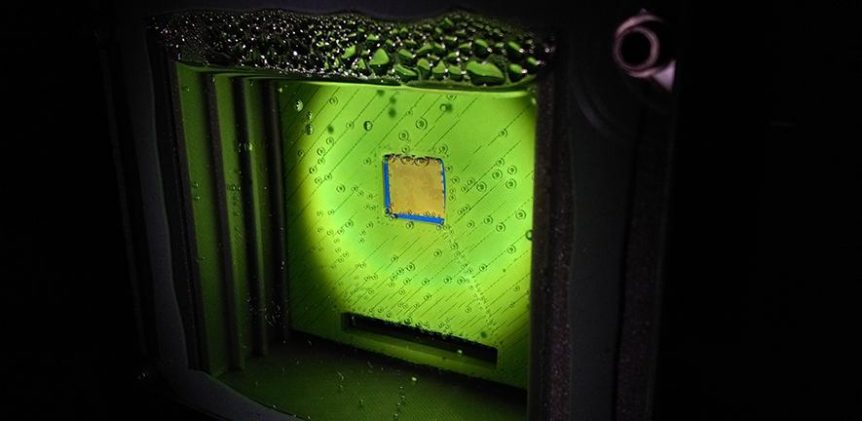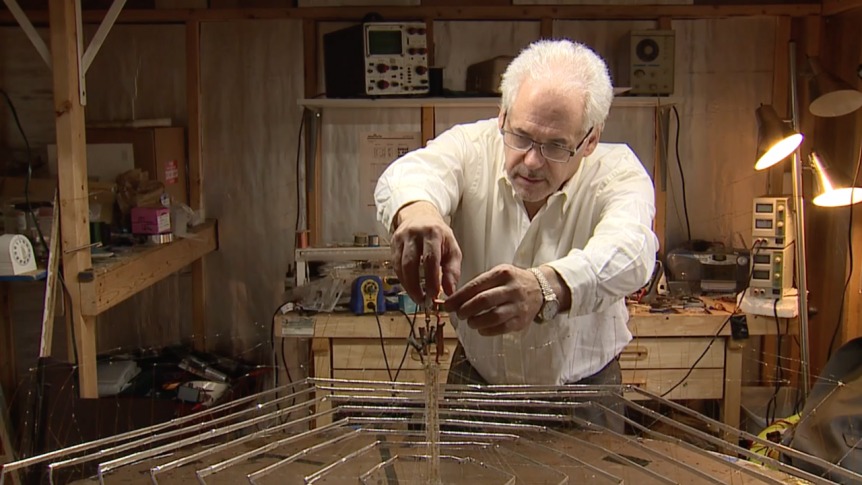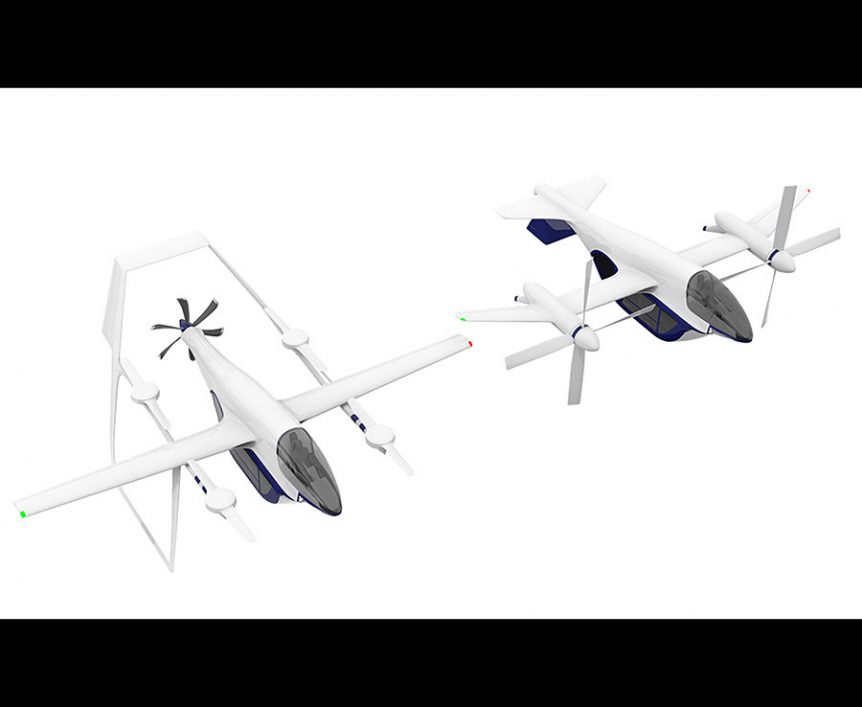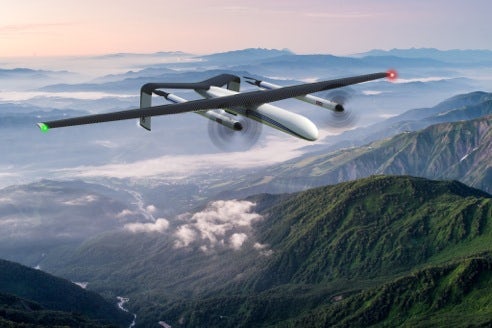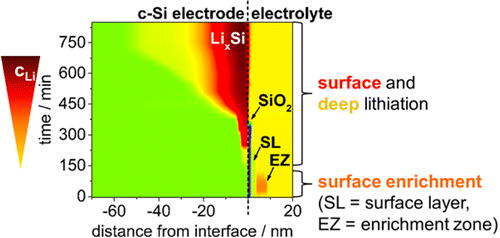Dawn One is a solar-powered climate observatory, one of many to come and an outgrowth of a long career for John Langford, Electra Aero’s CEO, and collaborator with Professor James G. Anderson of Harvard University. A seeming callback to John Langford’s human-powered aircraft from his MIT days, Dawn One is a 90-foot span unmanned aircraft system (UAS) destined to fly at stratospheric altitudes (49.000 feet maximum) while observing data for quantitative forecasts of risks in the climate. We see its first flight from the Manassas Regional Airport in Virginia on September 9. The assistants in hot pink and orange vests are Hokies, part of Virginia Tech University, and whose name is explained in a lengthy Wikipedia entry. The “solar-battery hybrid electric research aircraft” is part of the Stratospheric Airborne Climate Observatory System (SACOS) program. The program will consist of “an ensemble of solar powered aircraft operating for months in the stratosphere,” each “ each “focused on critical climate observing missions …
Craft Aero’s 16 Motors and Diamond Wings
Craft Aero, yet another newcomer in the electric Vertical Take Off and Landing (eVTOL) market, brings a novel 16 motor, diamond wing design to regional aviation. Laurie Foti writing for Tech Crunch, thinks, “Air taxis may still be pie in the sky,” but acknowledges Craft Aerospace for aiming to move the air travel industry forward, “with a totally new vertical takeoff and landing aircraft that it believes could make city-to-city hops simpler, faster, cheaper and greener.” She credits Craft for its “new” method of deflecting airflow downward to gain vertical takeoffs, something qualified by company co-founder James Dorris. He notes that, “Our tech is a combination of both existing and novel tech. The box wing has been built and flown; the high flap aircraft has been built and flown. They’ve never been synthesized like this in a VTOL aircraft.” Claiming to cut regional flight times in half, Dorris explains the time savings possible. “Anyone that’s ever had to take a …
Cambridge’s Artificial Leaf Makes Syngas
Cambridge University researchers have developed a new “artificial leaf” that uses sunlight, carbon dioxide and water to directly generate “syngas,” without releasing additional CO2 into the atmosphere. As the Cambridge team reported, ‘Syngas is currently made from a mixture of hydrogen and carbon monoxide, and is used to produce a range of commodities, such as fuels, pharmaceuticals, plastics and fertilizers.” Other “leaves” have been devised, perhaps the most famous being that of Daniel Nocera, formerly at MIT and now at Harvard University. He was among the first and at the time, most successful, or the leaf producers. Note the next step he proposes at the end of the short video. Professor Erwin Reisner from Cambridge’s Department of Chemistry has been working for seven years on achieving Nocera’s desire to directly produce fuel from the elements. “You may not have heard of syngas itself but every day, you consume products that were created using it. Being able to produce it sustainably …
Is Ionic Propulsion Plausible?
Ethan Krauss responds to MIT’s Ionic Flyer Coverage There seems to be great interest in ionic propulsion. After we published “MIT’s Ionic Flyer – Solid State All the Way,” our editorial offices (otherwise known as your editor’s kitchen) received a comment from Ethan Krauss, who corrected the historical record. He explains, “MIT was NOT “the first ion propelled aircraft of any kind to carry their power supply, as their video and paper say. They don’t use less voltage, they are not more efficient, they are not the largest. Size was not the limit in the past.” Click on image to see video of MIT’s first flights. “They are the second in the world to be able to claim that they built an ion propelled craft that can carry its power supply. Their craft however, was launched with the assistance of a bungee cord, and large wings thereby reducing the power needed for its 10 second flight.” The Cleveland Plain Dealer …
Terrafugia’s TF-2
Terrafugia, unabashedly calling its vehicles “flying cars” in many of its public pronouncements, has floated a concept that is a serious departure from their two previous designs. The TF-2 will be the equivalent of a shuttle bus, but with an aerial means of making a longer haul than mere in-town hops. Started by MIT graduates, many of them members of the rocketry club, Terrafugia has managed to garner an enormous number of media hits. It even became a possible Christmas gift in the 2010 Hammacher Schlemmer Christmas catalog. It flew its Transition before the crowds at AirVenture in 2013, and was able to obtain certification as a Light Sport Aircraft since then, but with a slightly higher than original LSA weight allowance. That seems to be moot at this point, since the FAA is going to allow LSA pilots to fly aircraft up to 3,600 pounds. Popular Science reported in 2014, “To meet highway-safety requirements, the Transition needs to be …
Carbon Fiber and the Grand Unified Airplane
Your editor has long held the belief that we are on the threshold of creating a Grand Unified Airplane, a craft that would draw all its energy from solar cells, the flexing of its wings, the air passing over its form, and the very act of flight itself. It seems to become less of a science fiction ideal and more of real-world possibility every day. Carbon fiber could be part of that possibility. What if your airplane were its own battery? Think of the weight savings and potential endurance and range. Your editor became fascinated with 2010 research done by Dr. Emile Greenhalgh of Imperial University in London, who developed a structural sandwich with carbon fiber outer layers and a fiberglass core. It could be used for body panels on a car, inspiring Volvo to become involved and proceed with initial tests. Since those early tests, other researchers have duplicated and expanded the research, with Dr. Leif Asp of Chalmers …
Long Hours of Droning On
Several different organizations are trying different ways to keep unmanned aerial vehicles, UAVs, up longer. We’ll look at three recent efforts in long-endurance missions, each with a unique technological approach. Wirth Research – Hydrogen Fuel Cell Wirth Research is now constructing a new tilt rotor, Vertical Take Off and Landing (VTOL), hydrogen fuel cell powered, advanced terrain-mapping drone. Carrying a payload of sensors and onboard data processing capabilities, the vehicle will be powered by a complete H2 storage, control and power system provided by HES of Singapore, a specialist in ultra-light hydrogen fuel cells. The Wirth machine’s missions range from precision agriculture, to pipeline and cable inspection for utilities, surveillance and other security-related tasks, through to detection and monitoring support for ordnance clearance operations. Combining the ability to carry a large payload and provide up to six-hour endurance in the VTOL configuration meant shifting from battery to hydrogen power. HES Founder and CEO, Taras Wankewycz, said, “We are shifting gears …
Even with Batteries, Paul MacCready Was Right
Dr. Paul MacCready repeatedly urged us to do more with less, getting big results from modest use of materials. That philosophy may be upheld yet once again by researchers from the Helmholtz-Zentrum Berlin (HZB) Institute of Soft Matter and Functional Materials. As reported here many times, people like Dr. Yi Cui at Stanford University, researchers at MIT, the Fraunhoffer Institute in Germany and many others are attempting to find the magic combination of ingredients that will allow us to transcend the weight penalty we currently trade for payload in heavier-than-desired electric aircraft. Scientists at the HZB, led by by Prof. Matthias Ballauff have directly observed for the first time a lithium-silicon half-cell during its charging and discharge cycles. Dr. Beatrix-Kamelia Seidlhofero carried out the experiments using the neutron source located at the Institute Laue-Langevin in Grenoble, France. She explains, “We were able to precisely track where the lithium ions adsorb in the silicon electrode using neutron reflectometry methods, and also …
Solid State Electrolyte – a Safer, More Powerful Alternative
Making batteries smaller, lighter, and more powerful is an ongoing trend, supposedly climbing at eight percent per year in terms of energy density (energy stored per unit of weight). Even this blog is guilty of sometimes unrequited enthusiasm for some new developments that appear to be an “answer” for aircraft use. Getting a battery that double or quintuples energy density would be ideal for aircraft, but seems to be a labor worthy of Sisyphus (you could look it up). As constantly noted here, batteries have three major components, the anode, or negative electrode; the cathode, or positive electrode; and the electrolyte, usually a liquid that allows the flow of ions between electrodes. That electrolyte is subject to overheating and on rare occasions, bursting into flames. That has led researchers at MIT, Samsung, and in California and Maryland to develop a solid-state electrolyte that might overcome the safety issue while providing more energy storage in a given space. Yan Wang, an …
Aluminum Yolks and Titanium Shells
A new “yolk-and-shell” nanoparticle could boost the capacity and power of lithium-ion batteries. MIT’s press release gives a graphic overview of what damages electrodes and shortens battery life. “One big problem faced by electrodes in rechargeable batteries, as they go through repeated cycles of charging and discharging, is that they must expand and shrink during each cycle — sometimes doubling in volume, and then shrinking back. This can lead to repeated shedding and reformation of its “skin” layer that consumes lithium irreversibly, degrading the battery’s performance over time.” Dr. Yi Cui and teams at Stanford’s National Accelerator Laboratory (Formerly the Stanford Linear Accelerator Center), and the Environmental Molecular Sciences Laboratory (EMSL) at Pacific Northwest National Laboratory all published papers on a similar joint accomplishment three years ago, as reported in this blog. Dr. Cui had studied several alternative ways to reduce the effects of expansion and contraction on electrodes. According to an MIT news release, “Now a team of researchers at MIT, led …



